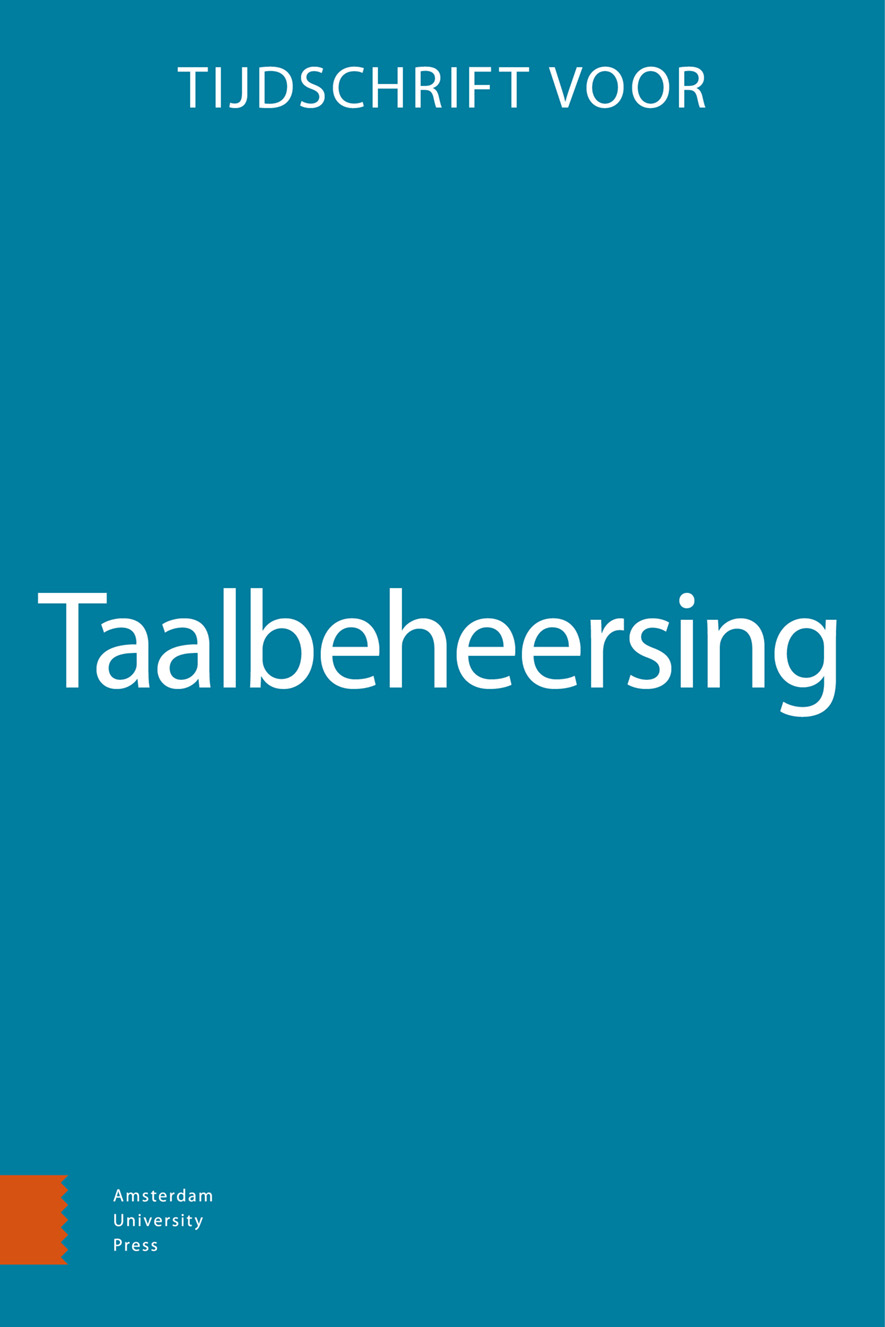- Home
- A-Z Publications
- Tijdschrift voor Taalbeheersing
- Previous Issues
- Volume 40, Issue 1, 2018
Tijdschrift voor Taalbeheersing - Volume 40, Issue 1, 2018
Volume 40, Issue 1, 2018
Language:
English
-
-
oa Het belang van taalbeheersing in onderzoek naar digitale communicatie
More LessAuthors: Jos Hornikx & Christine LiebrechtAbstract With the emergence of the internet and especially since the development of web 2.0, people increasingly communicate in an online environment. Be that as it may, this research domain has remained underexposed in Tijdschrift voor Taalbeheersing. The current special issue therefore addresses the importance of linguistic- and discourse-oriented research to explore the role of language in digital communicati Read More
-
-
-
oa De toegevoegde waarde van de taalbeheersing voor de verduidelijking van de conversational human voice
More LessAuthors: Kirsten Brouwer & Hanny den OudenAbstract A linguistic analysis of the concept CHV The concept of conversational human voice (CHV) was introduced in 2006 by Kelleher and Miller indicating a personal, conversational style in online organizational communication. The CHV measurement scale they presented consists of eleven items, like ‘the brand treats me and others as human beings’ and ‘tries to be interesting in communication’. Various studies showed posi Read More
-
-
-
oa “Wat vervelend dat de fiets niet is opgeruimd! Heb je een zaaknummer voor mij? ^EK”
More LessAuthors: Charlotte van Hooijdonk & Christine LiebrechtAbstract “Annoying that the bike hasn’t been removed! Can you give me a case number? ^EK”: Conversational Human Voice in webcare of Dutch municipalities The conversational communication style organisations use in webcare is an important factor affecting its success, and is referred to as the Conversational Human Voice (CHV, Kelleher, 2009; Kelleher & Miller, 2006). This communication style reflects attributes such as tr Read More
-
-
-
oa Taalaccommodatie in online datingprofielen
More LessAuthors: Tess van der Zanden, Maria Mos & Alexander SchoutenAbstract Language accommodation in online dating profiles: Effects of education level and type of dating site on language use This study investigates whether online dating profile owners accommodate their language use based on the type of dating site used. Following Communication Accommodation Theory, we expect that highly educated online daters’ language use on a dating site designed explicitly for the highly e Read More
-
-
-
oa @Organisatie in klachtentweets als trigger voor webcare-interactie
More LessAuthors: Rob le Pair & Adinda van EijkAbstract @Organisation in complaint tweets as a trigger for webcare interactions An organization’s webcare is aimed at dealing with as many consumer complaints as possible. The question is what features of negative word-of-mouth tweets lead to more webcare response. From a pragmalinguistic perspective, we started with a brief overview of the speech act of complaining, and its illocutionary force which is com Read More
-
-
-
oa De emotionele respons van lezers op affectieve headlines op sociale media
More LessAuthors: Daniel Tom, Monique Pollmann & Martijn GoudbeekAbstract This study investigates the relationship between the sentiment of news on social media and readers’ emotional response. We analyzed 1946 teaser headlines (‘New life for a dead language, as more public schools offer Latin’) from the Wall Street Journal’s Facebook page and determined their sentiment with the program VADER. We find that emotional headlines lead to more reactions than neutral headlines. T Read More
-
Volumes & issues
Most Read This Month
Article
content/journals/15739775
Journal
10
5
false
en

Most Cited Most Cited RSS feed
-
-
oa Fatale spelfouten?
Authors: Frank Jansen & Daniël Janssen
-
- More Less

